GALAPAGOS ISLANDS, ECUADOR - APRIL 2007
Part Four of Nine
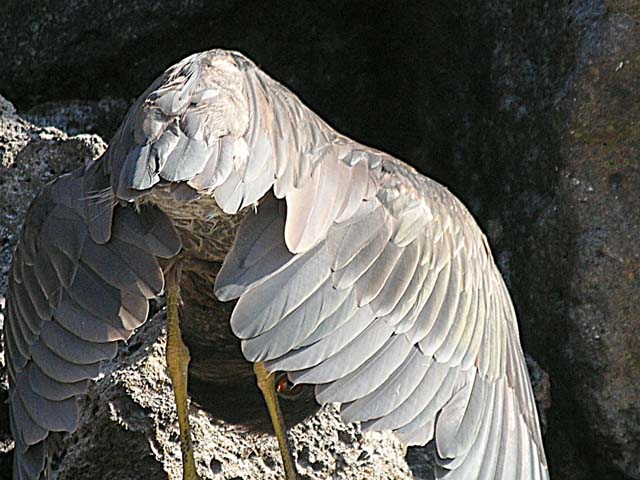
Peek-a-boo, I see you (Yellow-crowned Night Heron)
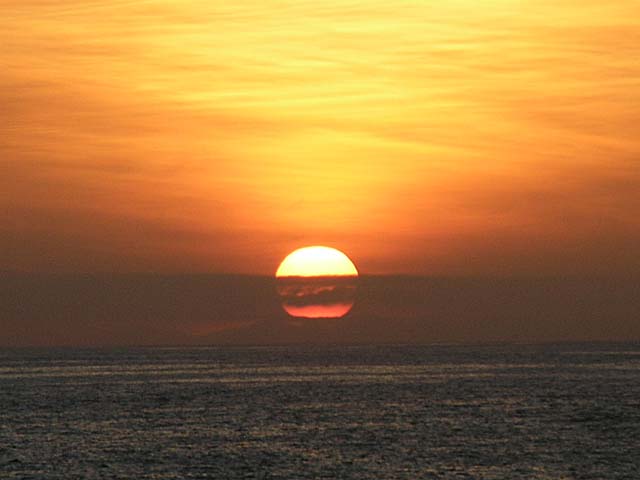
Sunset at sea as viewed from our boat, the Letty
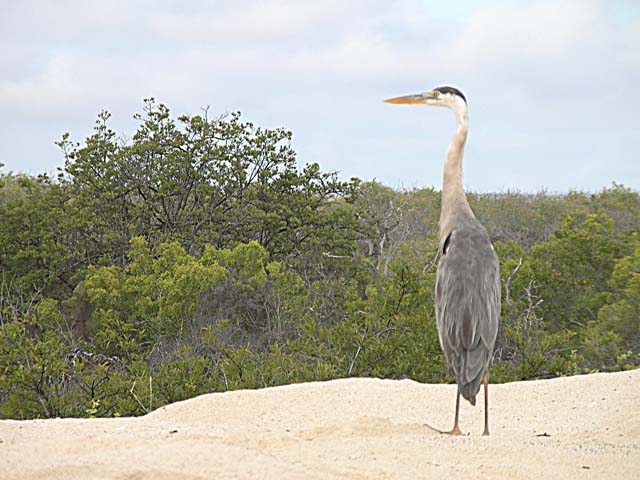
Great blue heron - largest heron in the islands. Largely blue-gray.
Bill is orange-yellow but darker on top.
In flight the neck is pulled
back in an S shape. Feeds on small fish, crabs, lizards, young iguanas,
and young birds. Often seen on beaches and lagoons.
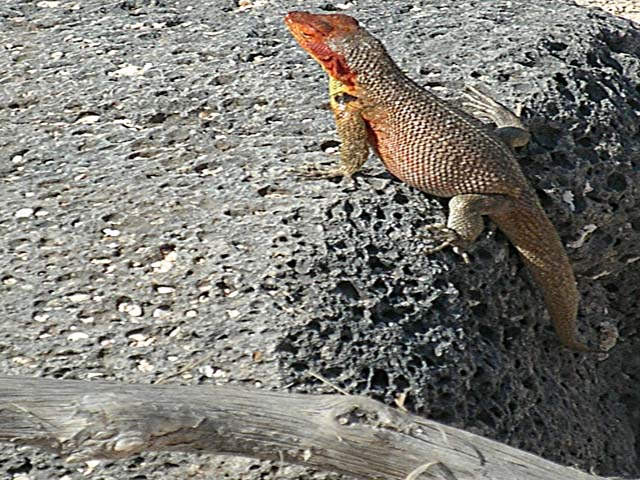
Lava lizards are found on all the major islands though they vary in color. They eat mainly
insects and some plant food. Breeding occurs mainly in the warm
season (January-June) with 3 to 6 eggs laid in deep burrows.
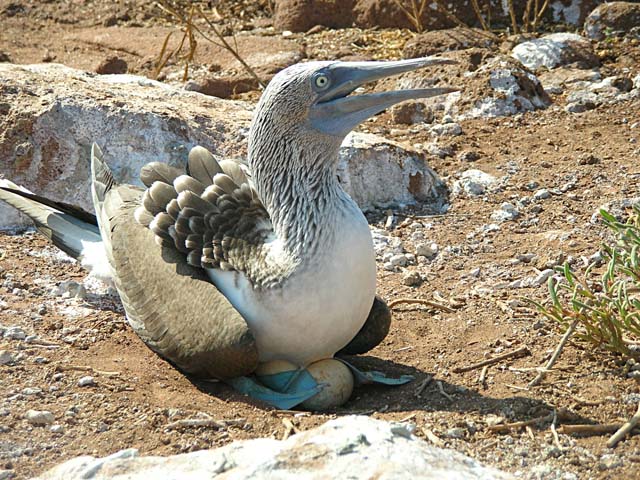
Blue-footed booby sitting on two eggs - Has a wingspan of about 5 feet. The male picks up its bright
blue feet in a slow, dignified fashion when doing a courtship
display. There may be one to three
eggs laid.
In a good year, all 3 may survive; otherwise,
the strongest one
or two will out compete the weakest,
which then dies of starvation. Blue-footed boobies feed almost exclusively on fish, which
they catch by dramatic plunge diving. They look arrow-like
as they get closer to the water.
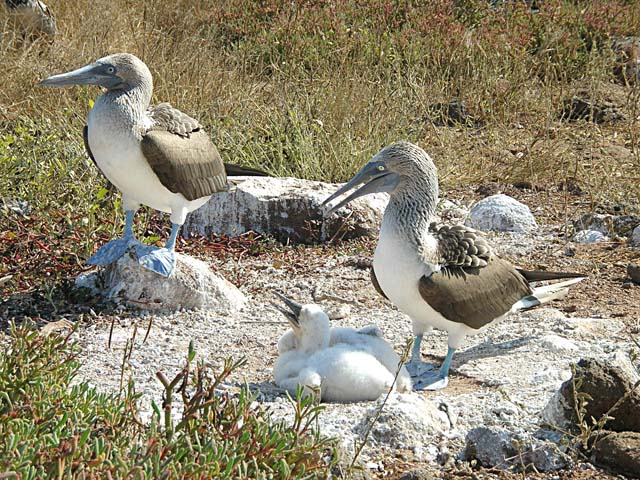
Blue-footed booby family - a couple with two babies. The blue-footed booby's nest is a scrape on the
ground surrounded by a ring of guano (manure). The Nazca boobies also nest on the ground, but the
red-footed boobies nest in trees.
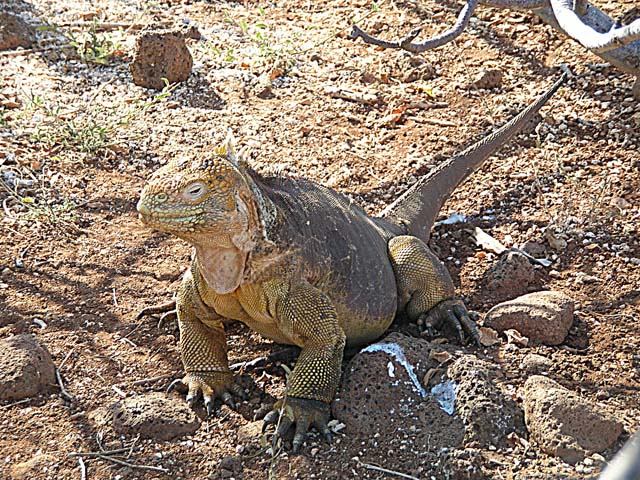
Land iguana (as opposed to a marine iguana).
They formerly existed on most of the islands but
hunting and competition by introduced animals such
as goats, rats, pigs and dogs, which prey on iguana eggs,
has caused their demise except for a few islands. The Park
is trying to rid the islands of introduced animals,
especially goats.
We did see wild goats and feral cat tracks at one island and a feral cat on Santa Cruz Island.
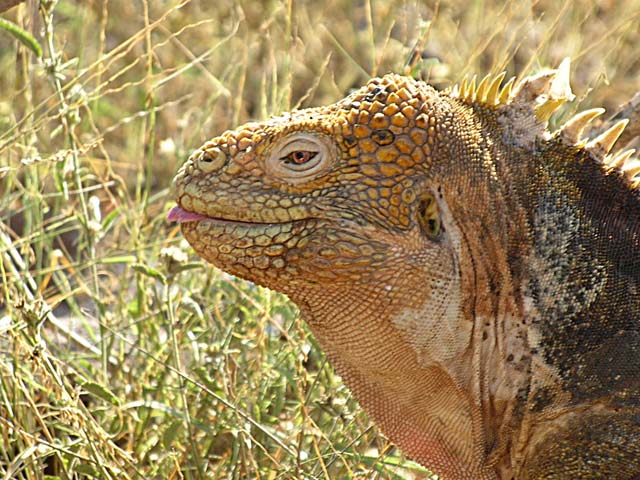
Land iguana feeding on vegetation
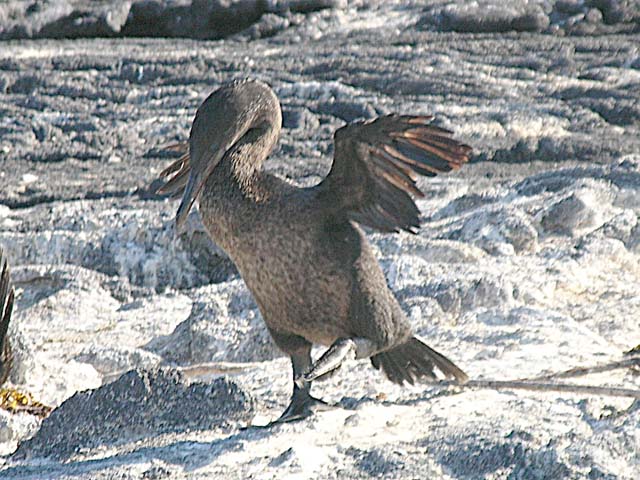
Flightless cormorant -
Aptly named due to its inability to fly. Its wings are
no more
than vestigial appendages
that appear to no longer serve a useful
purpose. Often seen hanging its stubby
wings out to dry after
coming ashore. Adults eyes are brilliant turquoise.
Juveniles are completely brown and
have a brown iris. They
feed on small fish. Its status is vulnerable, found only
on Fernandina and Isabela Islands and is
susceptible
to high mortality during El Nino events and faces
the threat posed by introduced species,
cats and dogs, on Isabela Island.
Link to Part Five of Galapagos
Pat's Home Page